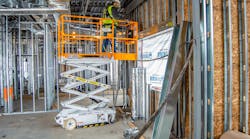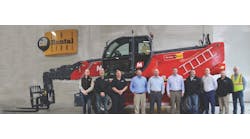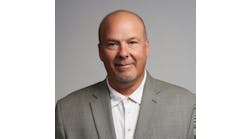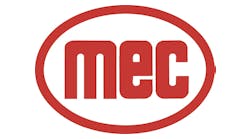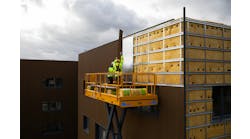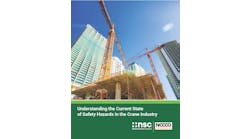Terry Dolan – CEO and president, Hy-Brid Lifts, talks with RER about safety features, educating rental customers on the new standards, asking customers more about their jobs, and more.
RER: What have been the major new developments to your company’s technology and products in the past year?
Dolan: In early 2019 we introduced the next generation of Hy-Brid Lifts — a collection of low-level scissor lifts, which will also be known as Mobile Elevating Work Platforms or MEWPs, that align with customer needs. The reclassification of our lifts makes it easier for end users to identify the most productive lift that best matches their operational needs. Our new line of Hy-Brid Lifts is divided into three series — the Push-Around Series, Pro Series and Zero-Turn Series — and was designed proactively with upcoming ANSI standards in mind.
We introduced two new models: the PA-1030 and the ZT-1630. These new models — and all Hy-Brid Lifts — are designed to make work easier and safer.
We introduced an all new motor with a planetary gear drive in the Pro Series and Zero-Turn Series. This new design provides more increased torque and power to enable the units to traverse over most jobsite obstacles such as cables and hoses. All Hy-Brid Lifts self-propelled work platforms now have the ability to easily climb a 30-percent grade. This makes moving a unit around a jobsite or loading on to trailers much easier for operators.
Obviously, the upcoming ANSI standards are an important topic. What have you done to change your equipment technologically to prepare it to be compliant with the new standards?
We’ve been promoting safer functionality for many years, and a lot of our lifts have features that go beyond the new ANSI standards. Gated entrances, for example, have been standard on Hy-Brid Lifts since we started designing lifts in 2004. The new standards are just now addressing this and forcing other designs to catch up, saying chain entrances on scissor lifts and vertical platform lifts are no longer allowed. Our gate is now a full door design with an exclusive cantilever toe board. When the gate is closed, small material cannot fall off the lift through the entrance. However, when you open the gate the toe board of the door will raise slightly over loose material, preventing the gate from jamming. This is when operators would force the gate open, causing damaging to the gate. Toe boards will now be required at entrances on all MEWPs to prevent objects from falling off the platform and potentially injuring a person below.
Railing height will also be increasing for work platforms, which will cause some manufacturers to use folding railings so they can fit through standard doors. Because of the low height of our lifts, and the fact that the scissors are integrated into the base, we won’t have to have folding railings to fit through standard doors.
Our motor controller has been standardized across our self-propelled models, which allows for additional sensors and safety functionality to comply with the new standards like platform load sensing. Our lifts have always restricted the weight in the platform, and we will be adding additional sensors and safety features to comply with the standard for load sensing. The new motor controller now enables the operator to have both proportional drive and proportional lift for precise maneuverability.
For people who have not been following the ANSI changes, can you sum up how your equipment will change on a practical jobsite level – in other words, what will the customer find different?
One thing customers will experience firsthand is the load sensing which limits the platform capacity to the manufacturers specification. By regulating the lifting capacity, users decrease the chances of overload accidents on a jobsite.
As new standards are implemented, contractors will find things they once lifted and moved with the lift will now trigger the load sensing system, causing the machine to go into a limited function mode until the weight is under the maximum rating. Rental centers will likely get a lot of calls about the lift not elevating or functions not working when the load sensing has been triggered and will need to be prepared to educate their customers.
Another aspect of the standards that will have customer-facing implications is machines will now be rated for indoor only or indoor/outdoor. Also, more lifts will be rated for only one person or will be heavier to accommodate additional people. Again, the ripple effects of this standard will reach customers and cause some frustrations that rental centers will need to be prepared to discuss.
For rental people, how will their responsibilities change with the new ANSI standards?
New standards inherently bring with them a substantial burden of education and awareness to companies renting or using MEWPs. The company renting or purchasing the product must now request the dealer or rental company to complete familiarization of delivered units.
If requested, the rental company employees will then need to familiarize their customers on the features and use of MEWPs. You will see more and more rental companies providing operator training to both staff and customers, which is something that manufacturers can assist with as well.
What do you suggest rental people do to communicate with their customers about the new ANSI standards?
First off, rental staff needs to become familiar with the standards and new features so they have the knowledge to discuss these items with customers. As noted before, new standards require automatic triggering of safety features based on tilt angles and weight restrictions, so it’s important to inform customers before they run into issues on the jobsite and thereby avoid unnecessary service calls.
Rental companies should ask customers more about their jobsite to make sure to match them with the best equipment for the job. Occasionally customers will rent an oversized lift for the job, when a shorter lift is sufficient. Larger lifts can be bulky, less maneuverable and can cause crushing hazards. Rental employees can tailor the equipment to best fit the customers’ needs. Hy-Brid Lifts offer a higher lifting capacity, so customers are able to lift more material, reduce trips and expand productivity with a Hy-Brid.
How will training programs change with the implementation of the new standards?
Training on safe operation of a class of equipment (ie self-propelled MEWPs) is a start. However, each manufacturer solves challenges in their own unique way, so it’s important we have familiarity with the brand and the machine. This can really only be achieved with additional information and material from the manufacturer. This material might be distributed through additional sections in manuals, interactive documents, web training or videos. I expect to see a dramatic increase in the number of manufacturer training programs and content.
What new safety measures have you implemented in the past year?
Safety has been a priority for Hy-Brid Lifts for years by going above and beyond the minimum required by the standard. In many ways, the new ANSI standards are forcing other manufactures to increase safety on their lifts. We have remained at the forefront of safety developments on our lifts since we began manufacturing them.
Safety isn’t just important to our customers, it’s important for our staff as well. We feel if every staff member has a better understanding of safety challenges in lifts, we’ll all be able to work together to not only develop safer products, but also to communicate features and safety tips to the market more succinctly. This begins with training our own team. This year we are implementing a standard that our sales and marketing team has become IPAF PAL card certified. We’ll also require the same certification for all of our production level staff. IPAF training and certification ensures that our employees are familiar with the safety aspects of our lifts.
Are you seeing an increase in demand for electric and hybrid machines and is your company or will your company participate in that market?
Demand is growing for electrification across the construction industry as a whole. Operators are quickly realizing the benefits — lessened noise pollution, reduced emissions, etc. Hy-Brid was one of the first in the industry to combine electric driving and steering systems with hydraulic lifting. Though it’s now becoming the industry standard, we’re proud to have been on the forefront of scissor lift innovation, and we continually work toward efficiency-boosting developments.
Obviously, the rental industry is a major market for your equipment. Do you see any particular trends in the rental market that you’ve noticed? Have you seen new start-ups, new players coming into the rental market?
Contractors are becoming more and more safety oriented, which is changing the demand of the equipment they need on jobsites. Low-level lifts are becoming a standard replacement for ladders, as contractors enforce stricter levels of safety to minimize falls on jobsites often linked to improper use of ladders.
Another trend we’re noticing in construction is takt-based scheduling, where a building is divided into zones by floor called takt areas. This method increases efficiency by allowing for all tools, crew and equipment to operate together zone by zone. The compact, lightweight design of Hy-Brid Lifts works well with this method, as multiple units can be in the same zone at the same time without damaging floors.
As new lift manufacturers enter the arena, we strive to maintain our commitment to producing a quality, American-made product and maintaining relationships with our employees, rental centers and end users.
